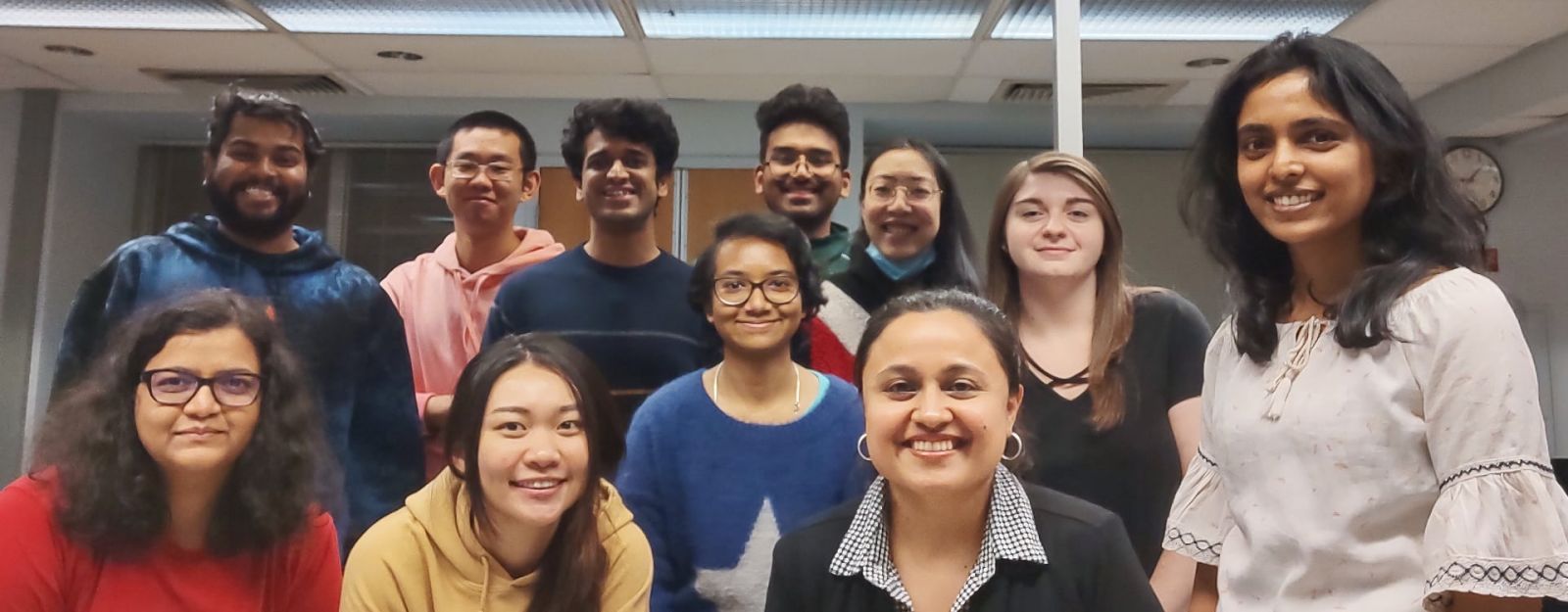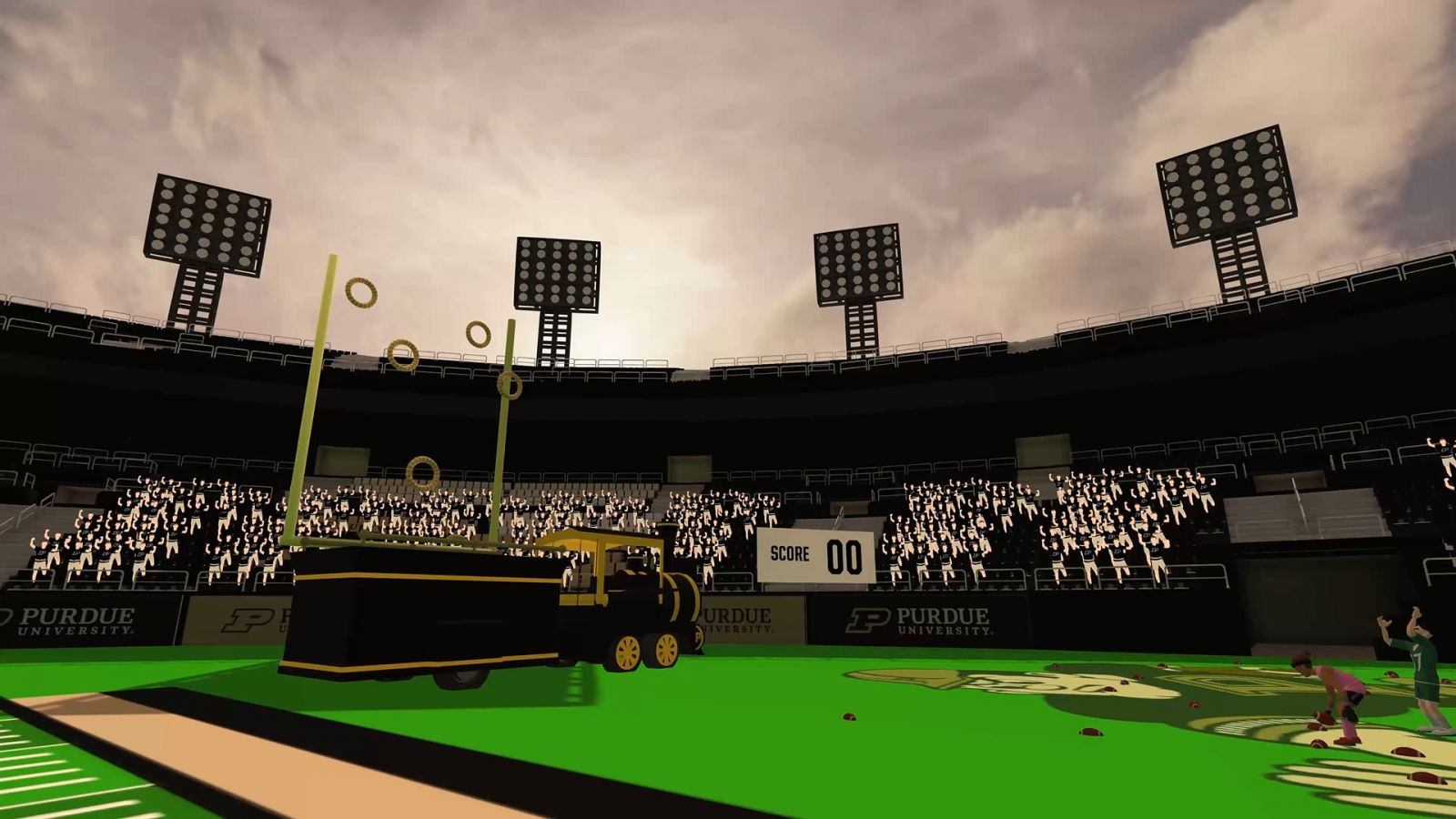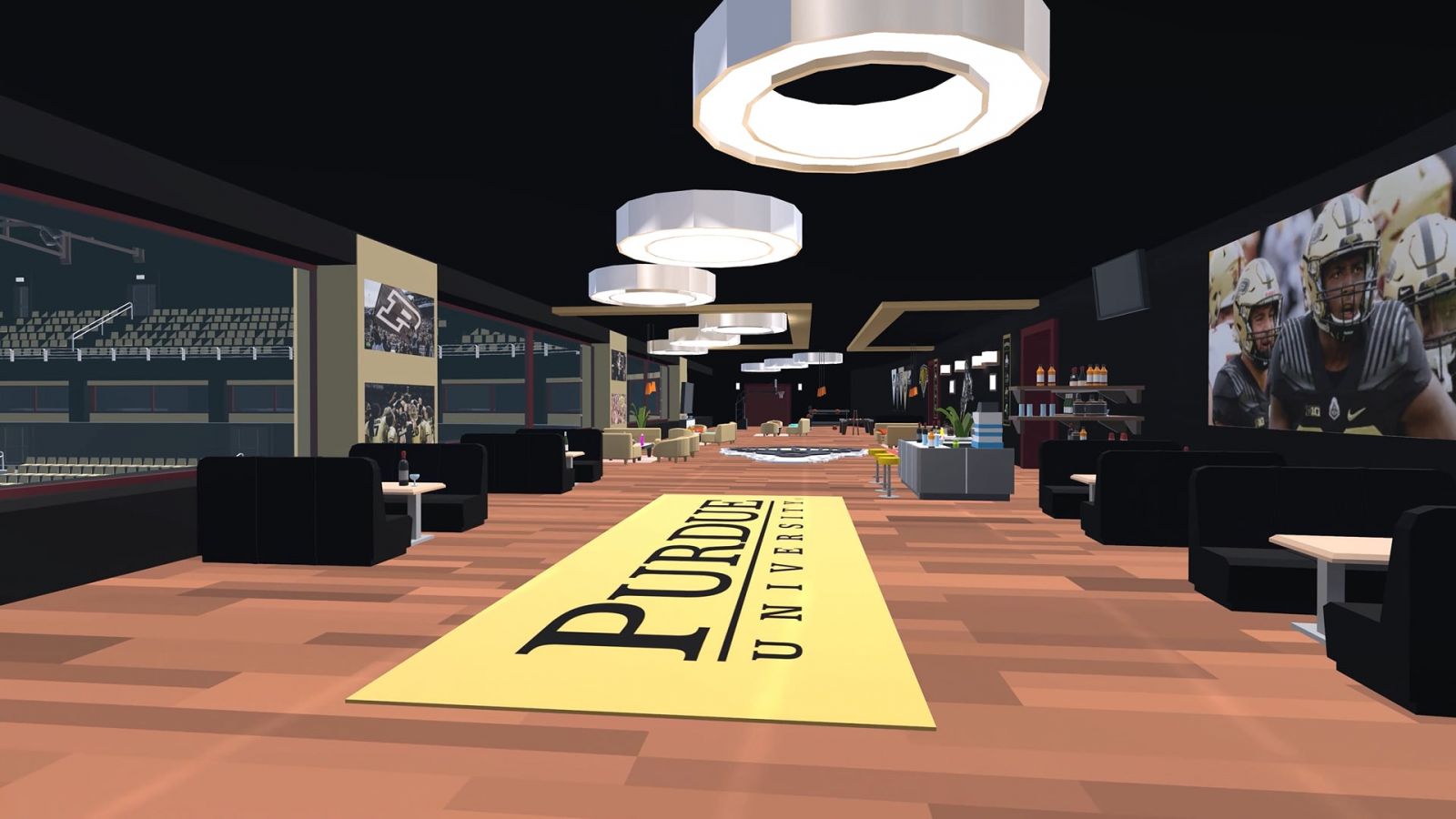
The “metaverse” means different things to different people, and even tech insiders have many definitions. Nandhini Giri, assistant professor of human-computer interaction and entertainment graphics in Purdue University’s Department of Computer Graphics Technology, says that in addition to the labels many people now know – VR (virtual reality), AR (augmented reality), and XR (extended reality) – she and her students have also heard a great deal about the metaverse’s implications for “digital reality” and “mixed reality,” with a goal of seamless convergence between our physical and virtual lives.
In essence, all of these terms relate to a set of developing technologies that Giri says “exist on a continuum between the physical and the virtual.” The basic tech requires a user to strap on a VR headset, which completely encompasses their vision and allows them to experience a 3D environment – as if they were suddenly living in a video game.
But for Giri and her students, the bigger picture is about “creating a seamless connection between reality and the digital world.” Giri emphasizes that influential tech companies are still putting their heads together to advance this technology, so the rules aren’t set in stone.
The lack of a rulebook has contributed to a free-spirited atmosphere in this new market — and, Giri said, Purdue’s forward-thinking students put the freedom of this virtual Wild West to good use. Last fall, ten graduate students in Purdue’s Polytechnic Institute worked alongside Giri and a multinational company called Iconic Engine to create prototypes of futuristic metaverse versions of Ross-Ade Stadium and Mackey Arena which can be navigated like a 3D level in a video game with a VR headset.

The course, CGT 58100, was called Design Futures. Her students came from a variety of backgrounds within Computer Graphics Technology. Several came from game development, but others brought additional skills to bear, building 3D graphical assets or the player’s user interface, while others analyzed the user experience on a conceptual level.
Design Futures allowed students to do more than just hone their abilities in this new tech frontier. They also flexed their creative muscles, getting into the nitty-gritty process of prototyping a 3D world, using Iconic Engine’s trademarked Metaverse Engine, that incorporated real-world elements of the Purdue football or basketball program that Boilermakers would recognize from the real-world Ross-Ade or Mackey.
Giri stressed that students in Design Futures began with the big picture before hopping into metaverse design.
“They began with ‘what-if’ scenarios that mapped out [potential futures] for this technology,” she said. “I wanted them to work on some of the philosophical, theoretical foundations of media and entertainment practices. That includes ideas about why we experience or enjoy certain things when they occur in media.”
The students were divided into two teams, one for Purdue’s football program and one for basketball. While it was important to mimic the venues, it wasn’t the sole focus of the teams’ pitches to Giri and their collaborators at Iconic Engine (including the company’s chief technology officer, a senior developer and the director of operations). Instead, teams devised “ways that this technology could actually lead to future products that are very much integrated with the physical sports experience on campus.” In the long-term, the students wondered if the technology might eventually allow for hyper-accurate motion capture on athletes themselves, allowing instant replay for referees that can be viewed from all possible angles in 3D space.

Giri instructed both student teams to consider ideas for improving Purdue’s sports culture by using XR gaming tech to improve Boilermakers’ experiences.
“Try to look at what could be improved five, ten years from now,” she said. “There’s a lot of secondary research for that – look at social media posts of students talking about their experiences. How are they getting to the stadium or getting their tickets? What is it like to actually navigate that space? What are the logistical challenges where the metaverse could be a solution?”
While the students were prepared to combine their technical skills with creative approaches, they also utilized the experience and vision of Iconic Engine’s staff. The company did much more than provide the in-game resources for students to create Purdue’s sports venues – they also acted as creative partners and consultants, with a dedicated Slack channel allowing for near-constant communication throughout the semester and the experience of working within a real development pipeline.
“Their enthusiasm actually helped the class overcome their own intimidation,” Giri stated. “The approach and attitude made us all very comfortable.”
“Seeing graduate students utilize our [trademarked] Metaverse Engine to create such impressive and unique experiences in just six weeks has truly showcased the potential of our technology. We are committed to making the Metaverse accessible to everyone, and this collaboration has been a significant step toward that goal,” added Iconic Engine’s CEO, Amit Chopra.

By the end of the semester, both teams had a fully-outfitted stadium or arena modeled on Purdue’s facilities, replete with a variety of activities designed to replicate – or even improve – the experience of attending a game at Purdue. In addition to creating replicas of the video boards in both venues and implementing true-to-life details such as crowd cheering functions and physics, both teams also took advantage of the freedom the metaverse offered. The football group created a scavenger hunt with memorabilia hidden around Ross-Ade Stadium, and the basketball group focused on enriching Mackey Arena’s internal environment, creating interactive lounges and game rooms for social mingling between players.
The future of the technology used in Design Futures is still being decided, but Giri speculated that such technologies could become industry standards down the line. Given this possibility, she created Design Futures for students to consider how they might carve out their own place within the industry.
“Given all the unknowns, how do you see yourself pushing the industry forward?” said Giri. “That way they see themselves as pioneers. It’s a good time to start these conversations, rather than just saying to them, ‘hey, this is the technology,’ and handing them a routine.”
The results that came from developing last fall’s new Design Futures course – from student feedback to the partnership with Iconic Engine – were promising enough, Giri said, that she plans to offer the course to a new graduate-level cohort every fall semester.
